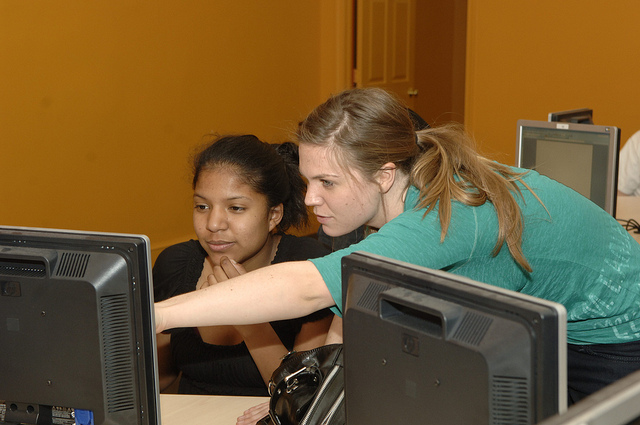Bridging Teacher Absence: How Classroom Culture and Technology Can Support Substitute Teachers

The teacher absence policy at my school was clear: Not coming to school? No technology. The rationale was that tech was too valuable to be trusted with kids when they don’t have experienced supervision, that subs couldn’t maintain the procedures and responsible behaviors necessary for using classroom devices.
And although this line of thinking has some obvious problems — shouldn’t the students share the responsibility? — there also seemed to be some truth behind it. I found that some subs seemed to quickly and naturally establish relationships with students and generally were able to maintain a positive environment, while others struggled.
What I eventually learned, however, was that the biggest factor determining the quality of my students’ experience actually had nothing to do with the prowess of the sub, but rather depended on something different entirely: me.
Strong Class Culture the Key
The unsurprising truth was that — as with almost anything related to student success — the biggest factor was how well I, and the students in my class, had established a strong culture. How much ownership and voice did they feel they had? How strongly had they internalized an ethic of collaboration and productivity? How empathetic were they towards the needs and goals of one another?
These are not easy things to develop, and it took me many years and trying many approaches to see concrete results. But the impact of this kind of transformation was enormous. And it fundamentally changed the experiences that my students were able to have when there was a substitute. Their feeling of ownership — over the tools and physical space that was available to them — inspired them to maintain the procedures and behaviors necessary for using and caring for our devices. I could be sure that when I returned, the technology would be no worse for wear.
It also opened up the possibility of a bridge to my return, which could best be done using technology, and which was indispensable to the success of my teaching. If I wanted to maintain a culture of commitment and hard-work in my classroom, then how could I possibly justify allowing “throwaway” days? My absence could not be a reason to stop our learning trajectory or allow an unproductive misuse of time.
“Productive” Absence
So, using tech tools like our school LMS, Google Docs, and other content apps, I was able to ensure that, in my absence, students were still productive, and that their experience included all the hallmarks of a responsive and functional classroom. For my class, that meant students had a choice in how they completed the assignment, they had access to resources to support them in completing it, and they had an accessible way to submit their work directly to me for feedback. This not only helped keep students on track, but provided substitutes with an opportunity to circulate among students and build relationships through one-on-one conversations.
There are many challenges to developing and maintaining a productive classroom, and perhaps even more to being a substitute teacher, but with a strong, student-centered culture and thoughtful use of technology, it is possible to have success with both.
If you’d like to learn more about useful tech tools for the classroom, check out Common Sense Education.
Photo Credit: "Duke Ellington DNG 357" by US Department of Education is licensed under CC BY 2.0.

Jamie Knowles
Jamie Knowles is the Senior Manager, Educator Professional Learning Programs at Common Sense Media, where he creates online professional development for teachers. Prior to his work at Common Sense, Jamie taught middle school English in Oakland, California, for eight years. For the 2016–2017 school year, Jamie received an Excellence in Teaching award and was one of three finalists for Teacher of the Year in Oakland Unified School District.
